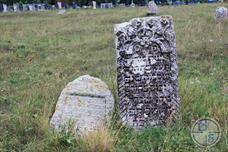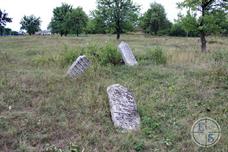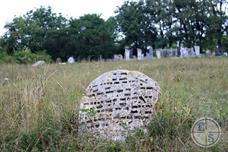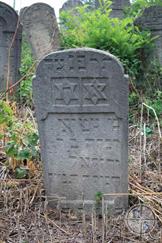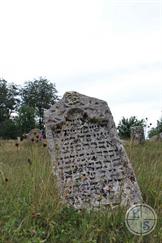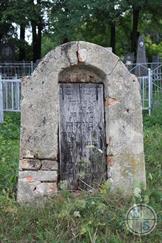Trostyanets
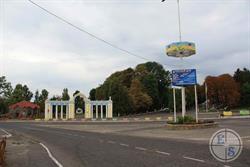 |
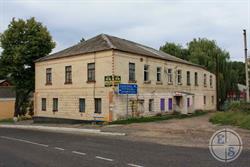 |
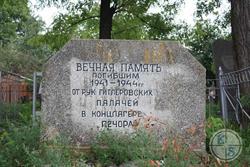 |
| Centre. Once it was the main shopping area of the Jewish town | It is an unremarkable building - rebuilt synagogue | Monument perished in the Holocaust |
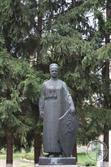 |
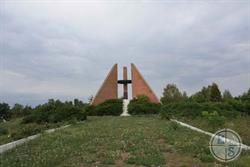 |
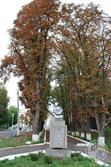 |
| One Jew, there still remains) |
Trostyanets, 2012, 2015
The first documented mention of the settlement Trostyanets belongs to 1598
Around 1616 it was renamed in Adamgrud or Adamgorodok. The new name indicates that the village was protected by fortifications, and possibly at the same time received city rights.
In 1667 on the basis of the Treaty of Andrusovo this place, along with other settlements Bratslav it was left for Poland and entered into the possession of the magnates Potocki.
In the documents of 1704 Trostianets mentioned among the few surviving settlements of the southern part of Bratslav province; at this time began an intensive colonization of the city.
In 1793, as a result of the second partition of Poland town Trostyanets entered the territory of the Russian Empire, in 1797 it was included in Bratslav County Podolia.
In 1834, the owners of the town Potocki built here sugar refining plant, one of the first in Podolia.
Since 1861 town Trostyanets with sugar refining plant and other enterprises passed from the hands of private owners in the property "Partnership Trostyanetsky sugar factory", the principal shareholders of which were members of the family of Kiev Sugar Brodsky.
Over time, the plant became one of the largest companies in this industry in the south of Russia.
Around 1616 it was renamed in Adamgrud or Adamgorodok. The new name indicates that the village was protected by fortifications, and possibly at the same time received city rights.
In 1667 on the basis of the Treaty of Andrusovo this place, along with other settlements Bratslav it was left for Poland and entered into the possession of the magnates Potocki.
In the documents of 1704 Trostianets mentioned among the few surviving settlements of the southern part of Bratslav province; at this time began an intensive colonization of the city.
In 1793, as a result of the second partition of Poland town Trostyanets entered the territory of the Russian Empire, in 1797 it was included in Bratslav County Podolia.
In 1834, the owners of the town Potocki built here sugar refining plant, one of the first in Podolia.
Since 1861 town Trostyanets with sugar refining plant and other enterprises passed from the hands of private owners in the property "Partnership Trostyanetsky sugar factory", the principal shareholders of which were members of the family of Kiev Sugar Brodsky.
Over time, the plant became one of the largest companies in this industry in the south of Russia.
Rabbi Shmuel Faivish, the author chronicles "Titus Gayaven" ( "impassable mud"), mentioned in his book about the almost complete destruction of the Cossacks in Cossack-Polish war settlement Trostets community, bearing in mind likely Trostyanets.
The census of the Jews in 1765, witnessed a rabbi Trostyantsa p. Gersh Yakubovich, indicates the presence of a large number of communities on the 119 Jews living in 43 houses.
In 1852, 42 Jewish artisan (Christian artisans in the village did not have) been registered in Trostyantse.
In 1853, community has a synagogue and a house of prayer 450r total number of parishioners.
During the second half of the XIX century. the number of Jewish Trostyantsa community has grown more than three times and reached two and a half thousand people. Most part of it accounted for Jews expelled from the country because of the "Provisional Regulations" in 1882
The census of the Jews in 1765, witnessed a rabbi Trostyantsa p. Gersh Yakubovich, indicates the presence of a large number of communities on the 119 Jews living in 43 houses.
In 1852, 42 Jewish artisan (Christian artisans in the village did not have) been registered in Trostyantse.
In 1853, community has a synagogue and a house of prayer 450r total number of parishioners.
During the second half of the XIX century. the number of Jewish Trostyantsa community has grown more than three times and reached two and a half thousand people. Most part of it accounted for Jews expelled from the country because of the "Provisional Regulations" in 1882
In 1918, Trostyanets, like the rest of Podolia, was under the German-Austrian occupation, then the power in the region passed to the Ukrainian Directory. Retreat military units Directories spring of 1919 was followed by looting of the Jewish population. The Jews of the town at first believed that the blessing of a Tzaddik protect them from the pogrom, but their hopes were dashed.
According to various sources, Trostyantse were brutally killed about 400 Jews - most of the male population, a number of women, as well as Jews from the surrounding villages, sought refuge in the town. Many houses were destroyed. At the site of a mass grave of victims of the pogrom, to the left of the road to Ladyzhin, it was found a large brick tombstone ( "Wailing Wall", as the locals call it). Its remains were kept in the late 1990s.
The Soviet government did not punish the murderers and thugs, and they roamed freely on the little town, showing off his booty.
Instead of repentance began pogrom agitation again. The Jews fled Trostyantsa, leaving all who could, who had relatives in other towns, in Odessa and Kiev. In Trostyantse, according to eyewitnesses, there are not more than a quarter of the number of surviving Jews, mostly widows and orphans.
According to various sources, Trostyantse were brutally killed about 400 Jews - most of the male population, a number of women, as well as Jews from the surrounding villages, sought refuge in the town. Many houses were destroyed. At the site of a mass grave of victims of the pogrom, to the left of the road to Ladyzhin, it was found a large brick tombstone ( "Wailing Wall", as the locals call it). Its remains were kept in the late 1990s.
The Soviet government did not punish the murderers and thugs, and they roamed freely on the little town, showing off his booty.
Instead of repentance began pogrom agitation again. The Jews fled Trostyantsa, leaving all who could, who had relatives in other towns, in Odessa and Kiev. In Trostyantse, according to eyewitnesses, there are not more than a quarter of the number of surviving Jews, mostly widows and orphans.
According to the newspaper "Der Emes" in 1923 in the village had about 600 Jews, among them 50 200 craftsmen and women who were registered at the Committee of the poor and engage in petty peddling.
Women and children constitute the majority of the inhabitants of the town pogromlennogo. Over time, we opened two children's homes for orphans in subsidies which involved the "Joint". The building housed a children's home school for 80 pupils.
Back in 1926, it was 303 Trostyantse merchant, mostly Jews; as a result of the struggle of the Soviet government to the private trade in 1928 has only 49 registered traders remained in the town. Entrepreneurs and traders were disenfranchised and are doomed to a miserable existence. Trostjanetsky Many Jews were forced to seek income in the agricultural cooperatives organized in 1928 - 1929 years, but the job is not saved from poverty and hunger.
Women and children constitute the majority of the inhabitants of the town pogromlennogo. Over time, we opened two children's homes for orphans in subsidies which involved the "Joint". The building housed a children's home school for 80 pupils.
Back in 1926, it was 303 Trostyantse merchant, mostly Jews; as a result of the struggle of the Soviet government to the private trade in 1928 has only 49 registered traders remained in the town. Entrepreneurs and traders were disenfranchised and are doomed to a miserable existence. Trostjanetsky Many Jews were forced to seek income in the agricultural cooperatives organized in 1928 - 1929 years, but the job is not saved from poverty and hunger.
Trostyanets was occupied by 25 July 1941 The place turned out to be in Transnistria - Romanian occupation zone. The occupation authorities have sent all the Jews who remained in the town (probably about a thousand people) in the death camp in Pechora (according to other sources - in the camp Ladyzhin).
After the liberation Trostyantsa Red Army March 13, 1944 back here no more than a dozen Jews who managed to escape from the camp and find refuge in other villages of Transnistria. Subsequently Trostianets back some Jews-veterans and families had time to evacuate before the occupation.
At the beginning of the 1990s. Trostyantse, urban village with a population of more than 8,000 people, lived no more than thirty elderly Jews.
In 2009, there lived a Jew ... 4
V.Lukin, "100 Jewish settlements in Ukraine"
After the liberation Trostyantsa Red Army March 13, 1944 back here no more than a dozen Jews who managed to escape from the camp and find refuge in other villages of Transnistria. Subsequently Trostianets back some Jews-veterans and families had time to evacuate before the occupation.
At the beginning of the 1990s. Trostyantse, urban village with a population of more than 8,000 people, lived no more than thirty elderly Jews.
In 2009, there lived a Jew ... 4
V.Lukin, "100 Jewish settlements in Ukraine"
Vinnitsa Region

My shtetl
My shtetl
Jewish towns of Ukraine
Jewish towns of Ukraine
